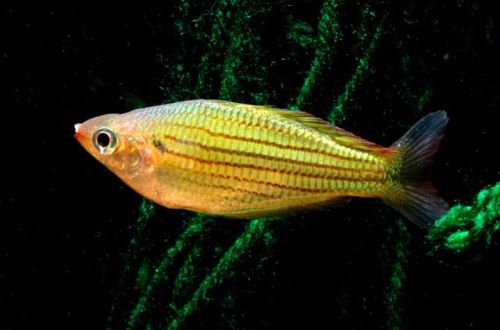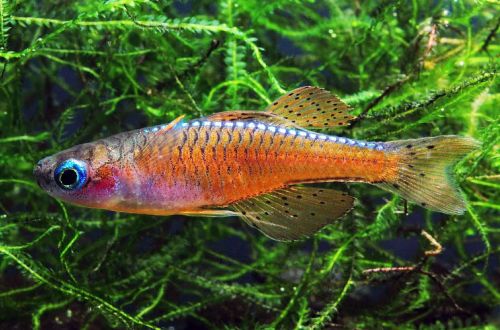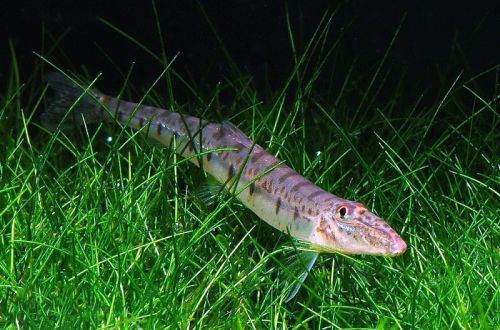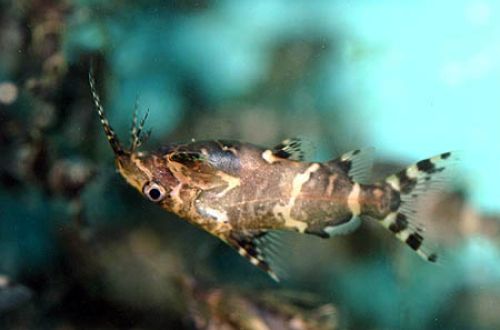
Rainbow six-stripe
The six-striped iris or Rainbow Fly, scientific name Melanotaenia sexlineata, belongs to the family Melanotaeniidae (Rainbows). One of the names is associated with the area where this species lives – the Fly River basin, which flows on the island of New Guinea.

Description
Adults reach a length of about 7 cm. The fish has an outward resemblance to Papua Melanothenia, but has a higher body. The coloration is variable, depending on the region Rainbow Fly can have a bluish back with orange fins or iridescent turquoise golden sheen. The presence of 5 to 8 horizontal dark lines is unchanged. Females are paler than males.
Behavior and Compatibility
Peaceful moving fish. Prefers to be in flocks, for this reason it is recommended to purchase a group of 6-8 fish. Compatible with many other non-aggressive species.
Brief information:
- The volume of the aquarium – from 150 liters.
- Temperature – 24-26°C
- Value pH — 7.0–7.5
- Water hardness – medium and high hardness (5-16 dGH)
- Substrate type – any
- Lighting – moderate
- Brackish water – no
- Water movement – moderate
- The size of the fish is about 7 cm.
- Food – any food
- Temperament – peaceful
- Keeping in a flock of 6-8 individuals
Maintenance and care, arrangement of the aquarium
For such active fish, the optimal size of the aquarium is considered to be a volume of 100 liters or more. This will be enough for a flock of 6-8 individuals. The design welcomes the presence of floating plants, which will be an effective means of shading, and will also prevent accidental jumping out of the aquarium.
Otherwise, the design is selected at the discretion of the aquarist, provided that there are free places for swimming.
In nature, fish live in slightly alkaline conditions. In a home aquarium, appropriate pH values should be maintained with an acceptable decrease to a neutral point.
Maintenance is standard and consists of several mandatory procedures: weekly replacement of part of the water with fresh water, removal of accumulated organic waste and equipment maintenance.
Food
Omnivorous species. Can be accustomed to popular dry food, and will also accept frozen and live food of a suitable size.





